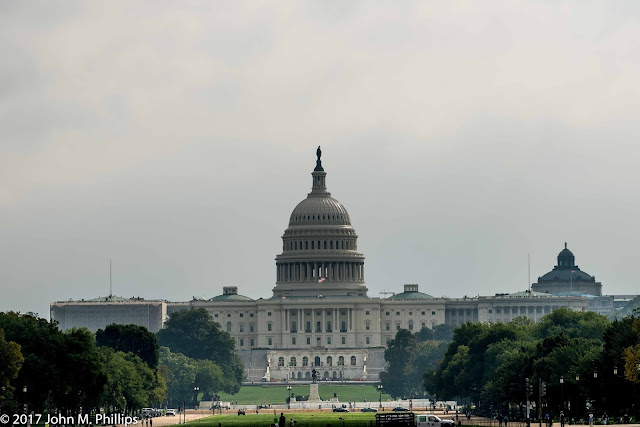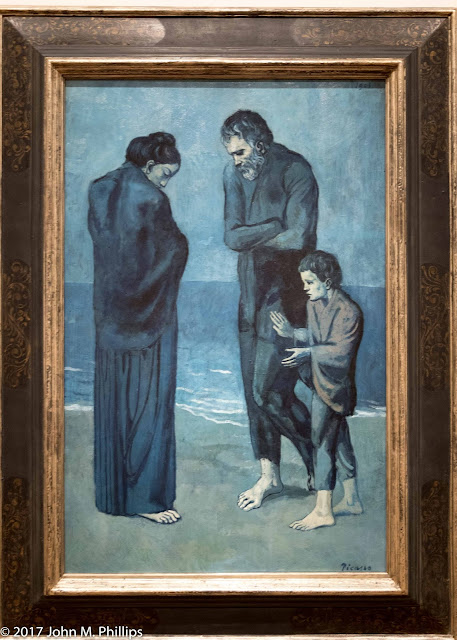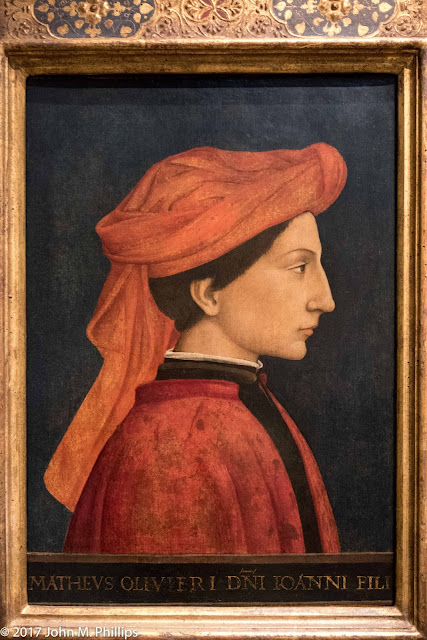First, a couple of classic shots from the rear of the nave, one featuring a couple of the supporting pillars and one a bit closer to the sanctuary.
I modified both of these shots in post processing to rectify the vertical lines for perspective distortion.
During my visit, I spoke to a young woman with a camera who also seemed intent on getting some shots of the facility. It turned out that she was affiliated with the School Sisters and "authorized" me to visit the balcony to get a couple of shots, so long as I stayed out of sight of other visitors. "Hiding" behind a pillar in the balcony, I took the following oblique shot of the main space.
I also took a shot of the stairway leading up to the balcony that I liked for the pattern of stair railings.
The apse ceiling makes a terrific architectural semiabstract.
And here is a shot of the ornate altar.
The space features a modest glass dome. Here is a shot of that feature (somewhat flawed because of lighting issues).
Most of these images were shot with my new lens, with which I am quite happy, even though I am still learning its uses. Lighting in an interior is virtually always difficult, and I did not have a tripod, so I am particularly pleased with the overall quality of these shots, given that limitation.
Considering that it is well over a hundred years old, the chapel is in terrific shape. And the facility's light color palette adds to its attractiveness. If you have not visited the chapel previously, I recommend doing so if you have that opportunity.
John


























































